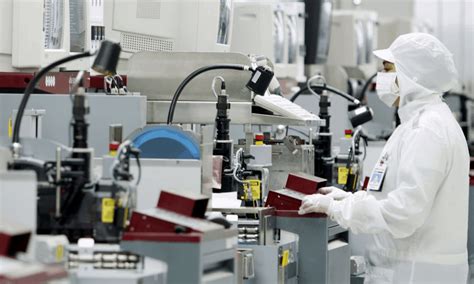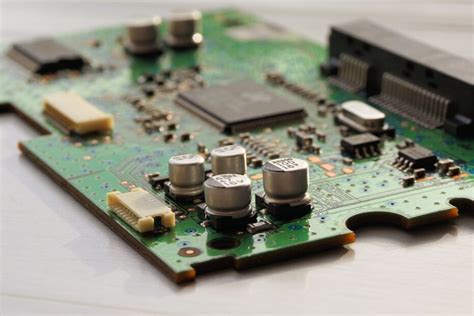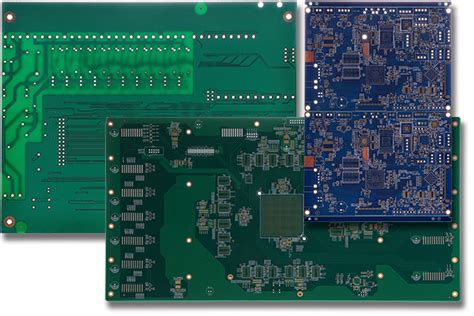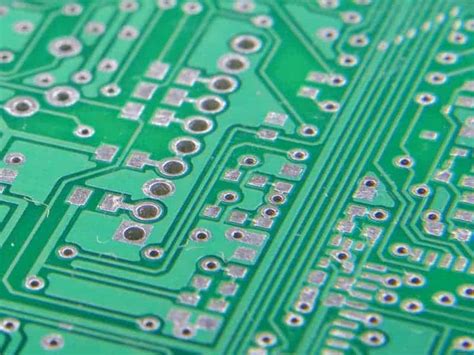Ceramic pcb price
Factors Influencing Ceramic PCB Price
Ceramic printed circuit boards (PCBs) have become increasingly popular in various industries due to their superior thermal performance, mechanical strength, and electrical insulation properties.
As demand for these advanced materials grows, understanding the factors influencing ceramic PCB prices becomes crucial for businesses and engineers alike. Several key elements contribute to the cost of ceramic PCBs, each playing a significant role in determining the final price.
Firstly, the choice of ceramic material is a primary factor affecting the cost.
Common materials used in ceramic PCBs include alumina, aluminum nitride, and beryllium oxide. Each of these materials has distinct properties and cost implications. Alumina is the most widely used due to its cost-effectiveness and satisfactory performance in many applications. However, for applications requiring higher thermal conductivity, aluminum nitride is preferred, albeit at a higher cost. Beryllium oxide, while offering excellent thermal performance, is less commonly used due to its higher price and health risks associated with its handling. Consequently, the selection of material directly impacts the overall cost of the ceramic PCB.
In addition to material choice, the manufacturing process also significantly influences the price.
Ceramic PCBs are typically produced using either thick-film or thin-film technology. Thick-film technology involves screen printing conductive, resistive, and dielectric pastes onto the ceramic substrate, followed by a firing process. This method is generally more cost-effective and suitable for high-volume production. On the other hand, thin-film technology, which involves sputtering or evaporating metal films onto the substrate, offers higher precision and performance but at a higher cost. The choice between these technologies depends on the specific requirements of the application, with cost considerations playing a pivotal role.
Moreover, the complexity of the PCB design is another critical factor.
As the design becomes more intricate, with multiple layers and fine traces, the manufacturing process becomes more challenging and time-consuming. This complexity often necessitates advanced equipment and skilled labor, both of which contribute to increased production costs. Additionally, the need for specialized features such as via filling, laser drilling, or surface finish can further escalate the price. Therefore, the design intricacy and additional features required must be carefully evaluated against the budget constraints.
Furthermore, the volume of production is a significant determinant of ceramic PCB pricing.
As with many manufacturing processes, economies of scale play a crucial role. Higher production volumes typically lead to lower per-unit costs due to the distribution of fixed costs over a larger number of units. Consequently, businesses planning large-scale production can benefit from reduced prices, whereas smaller orders may incur higher costs per unit.
Lastly, market conditions and supplier relationships can also impact ceramic PCB prices.
Fluctuations in raw material costs, changes in demand and supply dynamics, and geopolitical factors can all influence pricing. Establishing strong relationships with reliable suppliers can help mitigate some of these uncertainties, potentially leading to more favorable pricing terms.
In conclusion, the price of ceramic PCBs is influenced by a multitude of factors, including material selection, manufacturing process, design complexity, production volume, and market conditions. Understanding these elements is essential for making informed decisions and optimizing costs in the procurement of ceramic PCBs. As technology continues to advance and demand for high-performance materials grows, staying informed about these factors will remain crucial for businesses and engineers navigating the evolving landscape of ceramic PCB production.

Comparing Ceramic PCB Costs with Other PCB Types
When evaluating the costs associated with printed circuit boards (PCBs), it is essential to consider the various types available, each with its unique characteristics and price points. Among these, ceramic PCBs have garnered attention for their distinct advantages, particularly in high-performance applications. However, understanding how their costs compare to other PCB types, such as FR-4, metal-core, and flexible PCBs, is crucial for making informed decisions in electronics manufacturing.
Ceramic PCBs are renowned for their excellent thermal conductivity, high-frequency performance, and superior mechanical strength.
These attributes make them ideal for applications in aerospace, automotive, and high-power electronics, where reliability and performance are paramount. However, these benefits come at a cost. Ceramic PCBs are generally more expensive than traditional FR-4 boards, primarily due to the materials and manufacturing processes involved. The use of high-quality ceramic materials, such as alumina or aluminum nitride, contributes significantly to the overall cost. Additionally, the manufacturing process for ceramic PCBs often involves more complex and precise techniques, further driving up expenses.
In contrast, FR-4 PCBs, which are the most commonly used type, are known for their cost-effectiveness and versatility.
Made from a composite material of woven fiberglass cloth with an epoxy resin binder, FR-4 boards offer a good balance of performance and affordability. They are suitable for a wide range of applications, from consumer electronics to industrial equipment. The lower cost of FR-4 PCBs is largely due to the widespread availability of materials and the well-established manufacturing processes that have been optimized over decades.
Metal-core PCBs, another alternative, are designed to provide enhanced thermal management compared to FR-4 boards.
They incorporate a metal core, typically aluminum or copper, which helps dissipate heat more effectively. While metal-core PCBs are more expensive than FR-4 boards, they are generally less costly than ceramic PCBs. This makes them a viable option for applications where thermal performance is critical but budget constraints are also a consideration.
Flexible PCBs, on the other hand, offer unique advantages in terms of design flexibility and space savings.
They are made from flexible plastic substrates, allowing them to bend and conform to various shapes. This makes them ideal for compact and complex electronic devices. However, the cost of flexible PCBs can vary widely depending on the complexity of the design and the materials used. While they can be more expensive than FR-4 boards, they are often less costly than ceramic PCBs, especially in simpler configurations.
In conclusion, when comparing the costs of ceramic PCBs with other types, it is evident that ceramic boards are generally more expensive due to their superior performance characteristics and the specialized materials and processes required for their production. However, the decision to use ceramic PCBs should be based on the specific requirements of the application, such as thermal management, mechanical strength, and frequency performance. While FR-4, metal-core, and flexible PCBs offer more cost-effective solutions for many applications, the unique advantages of ceramic PCBs can justify their higher price in scenarios where performance cannot be compromised. Ultimately, a thorough evaluation of the application’s needs and budget constraints will guide the selection of the most appropriate PCB type.

How Manufacturing Techniques Affect Ceramic PCB Pricing
Ceramic printed circuit boards (PCBs) have become increasingly popular in various industries due to their superior thermal performance, mechanical strength, and reliability. However, the pricing of ceramic PCBs can vary significantly, influenced by the manufacturing techniques employed in their production. Understanding these techniques and their impact on cost is crucial for businesses and engineers seeking to optimize their budgets while maintaining high-quality standards.
To begin with, the choice of ceramic material itself plays a pivotal role in determining the price of ceramic PCBs.
Common materials include alumina, aluminum nitride, and beryllium oxide, each offering distinct thermal and electrical properties. Alumina is the most cost-effective option, widely used due to its good thermal conductivity and electrical insulation. In contrast, aluminum nitride and beryllium oxide, while more expensive, provide superior thermal management, making them suitable for high-power applications. Consequently, the selection of material directly influences the overall cost of the PCB.
Moreover, the manufacturing process of ceramic PCBs involves several intricate steps, each contributing to the final price.
One of the primary techniques is the thick-film process, which involves screen printing conductive, resistive, and dielectric pastes onto the ceramic substrate. This method is relatively cost-effective and suitable for low to medium-volume production. However, for applications requiring higher precision and finer features, the thin-film process is preferred. This technique involves sputtering or evaporating metal films onto the substrate, offering superior resolution and performance but at a higher cost due to the complexity and precision required.
In addition to the choice of process, the complexity of the PCB design also affects pricing.
As the number of layers and the intricacy of the circuit increase, so do the manufacturing challenges and costs. Multilayer ceramic PCBs require additional steps such as lamination and via formation, which add to the production time and expense. Furthermore, the need for precise alignment and registration in multilayer designs necessitates advanced equipment and skilled labor, further driving up costs.
Another factor influencing ceramic PCB pricing is the scale of production.
Economies of scale play a significant role in manufacturing, with larger production volumes typically resulting in lower per-unit costs. This is due to the distribution of setup costs over a greater number of units and the potential for bulk purchasing of materials. However, for smaller production runs or prototypes, the cost per unit can be substantially higher, as the initial setup and tooling expenses are spread over fewer units.
Additionally, advancements in manufacturing technology can impact pricing.
Innovations such as laser direct structuring (LDS) and additive manufacturing techniques are emerging as cost-effective alternatives for producing complex ceramic PCBs. These methods offer greater design flexibility and reduced material waste, potentially lowering production costs. However, the initial investment in new technology and equipment can be substantial, influencing the pricing structure until the technology becomes more widely adopted.
In conclusion, the pricing of ceramic PCBs is intricately linked to the manufacturing techniques employed, with factors such as material choice, production process, design complexity, and production scale all playing significant roles. As technology continues to evolve, it is essential for businesses to stay informed about the latest advancements and their potential impact on costs. By carefully considering these factors, companies can make informed decisions that balance performance requirements with budget constraints, ultimately optimizing their investment in ceramic PCBs.

The Impact of Material Choice on Ceramic PCB Price
The impact of material choice on ceramic PCB price is a multifaceted issue that requires a comprehensive understanding of the various factors at play. Ceramic printed circuit boards (PCBs) are renowned for their superior thermal conductivity, mechanical strength, and electrical insulation properties, making them an ideal choice for high-performance applications. However, these advantages come at a cost, and the choice of materials significantly influences the overall price of ceramic PCBs.
To begin with, the type of ceramic material used in the PCB plays a crucial role in determining its price.
Common ceramic materials include alumina (Al2O3), aluminum nitride (AlN), and beryllium oxide (BeO), each with distinct properties and cost implications. Alumina is the most widely used ceramic material due to its affordability and satisfactory performance in many applications.
However, when higher thermal conductivity is required, aluminum nitride becomes a preferred choice, albeit at a higher cost.
Beryllium oxide, while offering excellent thermal properties, is even more expensive and poses health risks during manufacturing, further driving up costs due to necessary safety measures.
In addition to the base material, the thickness of the ceramic substrate also affects the price.
Thicker substrates provide better mechanical support and heat dissipation but require more material, thus increasing the cost. Manufacturers must balance the need for performance with cost considerations, often opting for the minimum thickness that meets the application’s requirements.
Furthermore, the complexity of the PCB design can influence the price.
More intricate designs with multiple layers or fine traces necessitate advanced manufacturing techniques and precision equipment, which can significantly raise production costs. The need for specialized processes, such as laser drilling or precision etching, adds to the overall expense, making simpler designs more cost-effective.
Another factor to consider is the choice of metallization.
The conductive paths on ceramic PCBs are typically made using metals such as copper, silver, or gold. Copper is the most economical option, but in applications where superior conductivity or corrosion resistance is required, silver or gold may be used, leading to higher costs. The method of applying these metals, whether through thick-film or thin-film processes, also impacts the price. Thick-film processes are generally less expensive but may not offer the same level of precision as thin-film techniques.
Moreover, the volume of production can significantly affect the price per unit. Larger production runs benefit from economies of scale, reducing the cost per PCB.
Conversely, small batches or custom designs may incur higher costs due to setup fees and the lack of bulk purchasing discounts for materials.
In conclusion, the price of ceramic PCBs is heavily influenced by the choice of materials, substrate thickness, design complexity, metallization options, and production volume. Each of these factors must be carefully considered to achieve a balance between performance and cost. As technology advances and demand for high-performance PCBs grows, manufacturers continue to explore innovative materials and processes to optimize both functionality and affordability. Understanding these dynamics is essential for making informed decisions in the design and procurement of ceramic PCBs, ensuring that they meet the specific needs of their intended applications while remaining within budget constraints.

Trends in Ceramic PCB Pricing for 2024
As we look towards 2024, the landscape of ceramic printed circuit board (PCB) pricing is poised for notable shifts, driven by a confluence of technological advancements, market demand, and global economic factors. Ceramic PCBs, known for their superior thermal conductivity, mechanical strength, and reliability, are increasingly becoming the material of choice in high-performance applications such as aerospace, automotive, and telecommunications. Consequently, understanding the trends in ceramic PCB pricing is crucial for industry stakeholders aiming to navigate the evolving market dynamics effectively.
To begin with, one of the primary factors influencing ceramic PCB prices in 2024 is the advancement in manufacturing technologies.
Innovations in production processes, such as laser direct structuring and additive manufacturing, are enhancing the efficiency and precision of ceramic PCB fabrication. These technological improvements are expected to reduce production costs over time, potentially leading to more competitive pricing. However, the initial investment required for adopting these advanced technologies may temporarily offset cost reductions, resulting in a complex pricing landscape.
Moreover, the demand for ceramic PCBs is anticipated to rise significantly, driven by the growing adoption of electric vehicles (EVs) and the expansion of 5G infrastructure.
As EV manufacturers seek to improve battery management systems and enhance vehicle performance, the need for reliable and efficient PCBs becomes paramount. Similarly, the deployment of 5G networks necessitates components that can withstand higher frequencies and power levels, further boosting the demand for ceramic PCBs. This surge in demand is likely to exert upward pressure on prices, particularly if supply chain constraints persist.
In addition to technological and demand-driven factors, global economic conditions will also play a pivotal role in shaping ceramic PCB pricing trends.
The ongoing geopolitical tensions and trade policies could impact the availability and cost of raw materials essential for ceramic PCB production. For instance, fluctuations in the prices of alumina and other ceramic materials could directly affect the overall cost structure. Furthermore, currency exchange rates and inflationary pressures in key manufacturing regions may contribute to price volatility, necessitating careful monitoring by industry participants.
Another aspect to consider is the increasing emphasis on sustainability and environmental regulations.
As industries worldwide strive to reduce their carbon footprint, the demand for eco-friendly manufacturing processes and materials is on the rise. Ceramic PCB manufacturers may face additional costs associated with implementing sustainable practices, which could be reflected in the pricing. However, these efforts could also open up new market opportunities, as environmentally conscious consumers and businesses prioritize sustainable products.
In conclusion, the pricing trends for ceramic PCBs in 2024 will be shaped by a myriad of factors, including technological advancements, market demand, global economic conditions, and sustainability considerations. While advancements in manufacturing technologies hold the promise of cost reductions, the rising demand from sectors like electric vehicles and 5G infrastructure may exert upward pressure on prices. Additionally, global economic uncertainties and sustainability initiatives will add layers of complexity to the pricing landscape. As such, industry stakeholders must remain vigilant and adaptable, leveraging insights into these trends to make informed decisions and capitalize on emerging opportunities in the ceramic PCB market.






